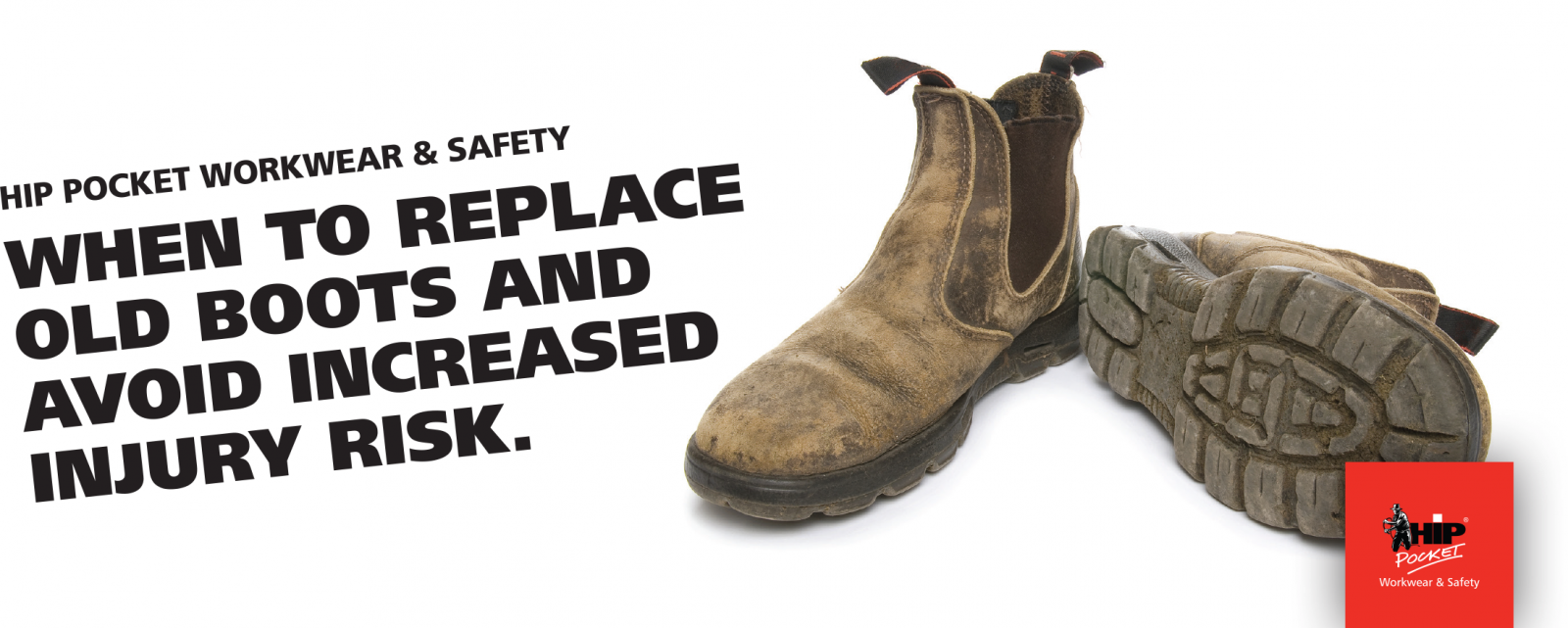
When To Replace Old Boots and Avoid Increased Injury Risk
Wearing old, worn out boots with compromised safety features and reduced support or grip can. Read More...

Wearing old, worn out boots with compromised safety features and reduced support or grip can significantly increase the likelihood of an injury, especially in high risk environments.
Boots that have passed their use by date can greatly increase your risk of slipping or developing foot, knee and back pain from conditions such as tendonitis.
According to Blundstone’s CEO, Steve Gunn, 70 per cent of people aren’t even aware their boots have a lifespan.
He cites research showing that while on average most people keep their boots for three to five years, almost 20 per cent keep their boots for 10 to 30 years.
While there’s no definitive formula for determining your boots’ lifespan, it’s best to replace them as soon as you have any doubts about their integrity, quality or ability to protect your feet.
Marketing manager of Oliver Footwear, Benice Deal told Hip Pocket Hub that “boots should be replaced if they have any significant cracks or holes in the upper leather, sole, or linings”.
They should also be replaced if the outer soles are bald or the toe caps are showing through the leather uppers. We take a closer look at some of the factors affecting your boots’ lifespan and how you can help them last longer.
HOW LONG SHOULD MY BOOTS LAST?
According to Ms Deal, “the lifetime of your boots depends on a number of factors including the working environment, care and maintenance of your footwear”.
Choosing the right boots for your occupation, industry and work environment is critical for the longevity of both your boots and your health - especially if you’re likely to come into contact with hazards such as hot surfaces, welding sparks, chemicals and electrical materials.
“For example, products with polyurethane (PU) rubber soling are more effective in hot areas, while thermoplastic polyurethane (TPU) is abrasion resistant, making it suitable for applications around concrete and abrasive surfaces,” explained Ms Deal.
“Furthermore, toe scuff protection extends the life of the leather upper, especially in applications where kneeling is required on a regular basis, such as tiling and building.” .
CARE FOR YOUR FOOTWEAR:
Correctly storing and maintaining your boots can dramatically increase their lifespan.
This includes treating work boots with a waterproofing agent, using a soft bristle brush to remove dirt and debris and allowing wet boots to dry naturally.
Ms Deal also recommended having two pairs of boots if possible and regularly rotating them to allow for complete drying each day.
It is also recommended that you wear boots regularly and store them in a cool, dry place to prevent the soles from deteriorating.

WARRANTY:
While Oliver Footwear use premium materials in their safety boots, they understand the need to give peace of mind to their customers.
For that reason, they offer a six month warranty on their workmanship and materials. They also offer a 30-day comfort guarantee, provided you have the receipt and the boots were properly fitted at the time of purchase, haven’t been damaged on the worksite and have only been used in environments where they were fit-for-purpose.
To learn more about the difference a good pair of boots can make, check out our guide to choosing safety boots that are fit for purpose.

Wearing old, worn out boots with compromised safety features and reduced support or grip can. Read More...

Your feet are killing you. And it is probably your work boots that are doing it. While they . Read More...

Win a Steel Blue/Hip Pocket Bar Fridge – What a great way to start off 2021 with a brand-new. Read More...